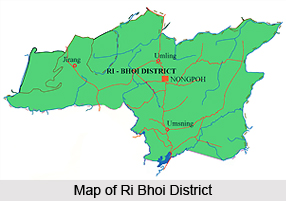 Administration of Ri-Bhoi District is headed by the Deputy Commissioner. Ri-Bhoi District consists of three Community and Rural Development Blocks namely Umsning Community and Rural Development Block with its headquarters at Umsning, Umling Community and Rural Development Block with its headquarters at Nongpoh and Jirang Community and Rural Development Block with its headquarters at Patharkhmah. Ri Bhoi District has only one Administrative Unit at Patharkhmah.
Administration of Ri-Bhoi District is headed by the Deputy Commissioner. Ri-Bhoi District consists of three Community and Rural Development Blocks namely Umsning Community and Rural Development Block with its headquarters at Umsning, Umling Community and Rural Development Block with its headquarters at Nongpoh and Jirang Community and Rural Development Block with its headquarters at Patharkhmah. Ri Bhoi District has only one Administrative Unit at Patharkhmah.
The hierarchy of administration of Ri Bhoi District is divided into four levels - District Administration at Nongpoh is headed by the Deputy Commissioner and his assisting officers, Administrative Unit at Jirang is headed by the Administrative Officer and a team of officials, Traditional Institutions are headed by the Syiems and the Sirdars, Traditional Durbars of the Syiem Raids and Village Administration by the headmen. The first two categories pertains to the state government of Meghalaya and the latter three comes within the purview of United Khasi-Jaintia Hills Autonomous District (Administration of Justice Rules) 1953 of the District Council which were framed in accordance with the provisions of the Sixth Schedule to the Constitution of India. The jurisdiction of civil administration coincides with parts of the administrative areas of the Khasi Hills Autonomous District Council Shillong, having the office of the Area Superintendent at Nongpoh. As it is a well-known fact, the Sixth Schedule, is the only provision in the Constitution of India framed solely for the preservations of the customary practices and administrative rights of the Khasis being the natives which includes regulation of jhum control, implementation of some rural programmes, regulation of trade for non-tribal communities, village administration, etc.
This article is a stub. You can enrich by adding more information to it. Send your Write Up to content@indianetzone.com






